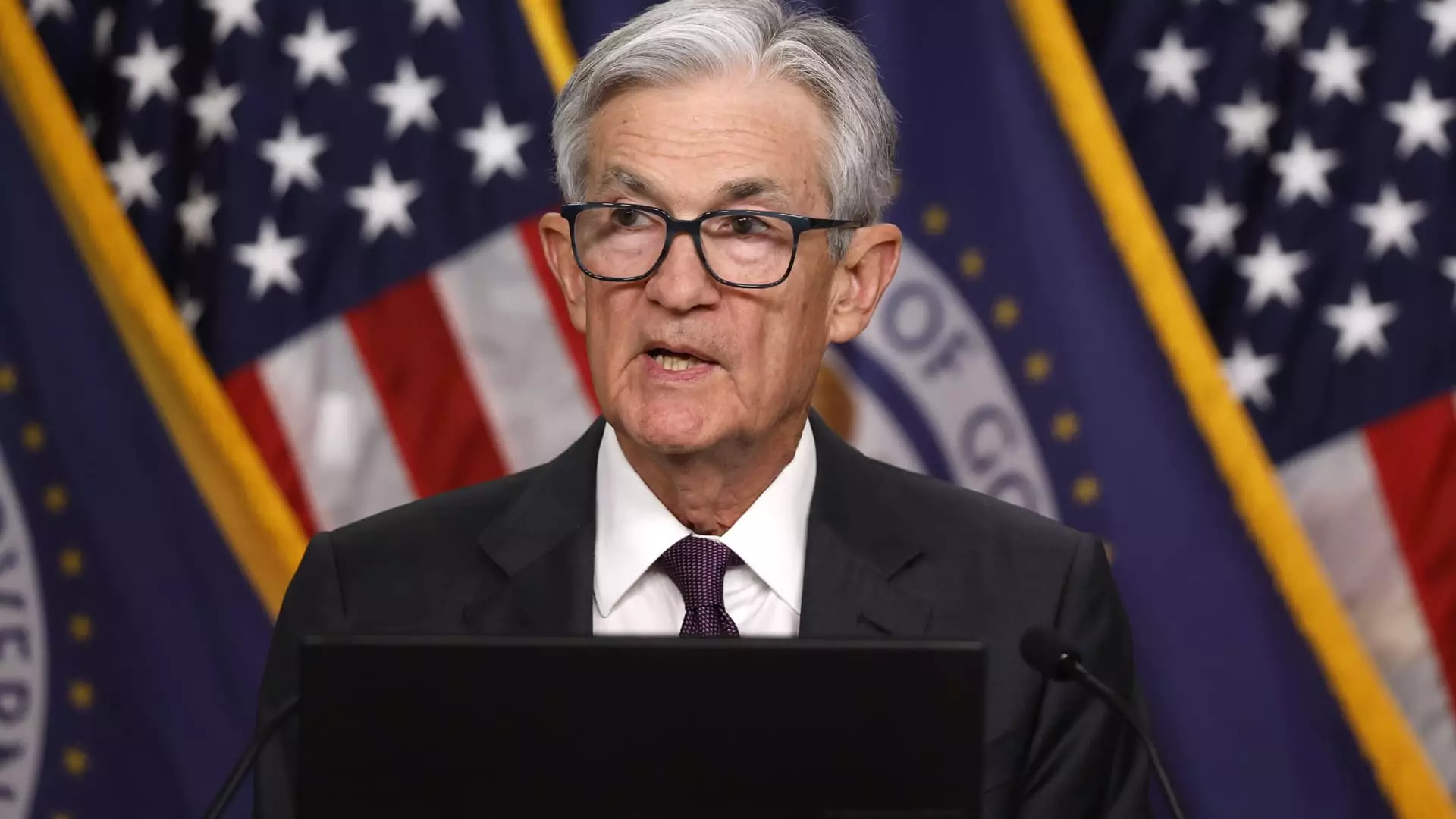In a pivotal moment for the American economy, the Federal Reserve has decided to keep its key interest rate untouched, maintaining it within a range of 4.25% to 4.5%. This enduring stability, which has been in place since December, reflects a larger picture of hesitation and uncertainty that has enveloped both the political and economic landscape. Given the complexities arising from the Trump administration’s trade policies, this decision appears less an isolated monetary stance and more a strategic consideration aimed at navigating through turbulent waters.
The Federal Open Market Committee articulated its concerns in a statement that revealed a growing apprehension about the economic outlook. The Fed’s dual mandate—achieving maximum employment while stabilizing prices—has increasingly looked vulnerable. The acknowledgment that risks of rising unemployment and inflation have been heightened is a red flag for economists, signaling that the Fed is cautiously weighing the broader implications of its decisions.
The Trade Policy Quandary
One of the most significant concerns haunting the Fed revolves around the ongoing trade tensions. While the post-meeting dialogue did not explicitly mention tariffs, they are an unmistakable undercurrent influencing economic policy. Chair Jerome Powell’s remarks hinted at the potential for tariffs to incite not just inflationary pressures, but also a slowdown in economic growth. This juxtaposition opens up the unsettling possibility of stagflation—a scenario that has not been seen in the U.S. since the early 1980s.
The complexity of the relationship between tariffs and economic health cannot be overstated. On one hand, the imposition of tariffs can elevate prices and disrupt supply chains, leading to consumer price hikes. On the other, such protective measures can stifle trade and deter investment, ultimately curtailing economic growth. The Fed’s current landscape is akin to walking a tightrope, attempting to balance these conflicting pressures while steering the economy towards a sustainable path.
Economic Indicators: A Mixed Bag
Despite the ominous clouds surrounding trade, certain economic indicators continue to project a mixed-but-resilient picture. Job growth remains relatively robust, with April witnessing an increase of 177,000 nonfarm payrolls. The unemployment rate, remaining steady at 4.2%, provides a buffer for the Federal Reserve as it grapples with the potential fallout from trade policies and tariffs.
Nonetheless, the economy’s multifaceted nature calls for a nuanced understanding. The Gross Domestic Product (GDP) contracted by 0.3% in the first quarter, attributed largely to faltering consumer and government spending, compounded by an unexpected surge in imports. With predictions of returning positive growth in the upcoming quarter, Wall Street economists remain cautiously optimistic, albeit with an air of uncertainty that reflects the larger trade discussions.
The uncertainty here is palpable. Business surveys reveal that many managers are grappling with anxiety regarding pricing and supply issues stemming from the tariffs. This sentiment serves as an essential barometer for economic stability. The actions of the Federal Reserve are now more critical than ever, as they navigate this minefield of economic indicators, trade talks, and inflation expectations.
Market Sentiment and Fed Actions
Market responses have shown notable volatility, particularly as pricing expectations for Fed actions ebb and flow. Heading into their latest meeting, traders were largely expecting no immediate rate cuts, reflecting confidence that the Fed would hold off on action until there was clearer visibility on economic conditions. Yet, the specter of potential rate cuts later in the year looms, as traders begin to factor in the possibility of three cuts overall based on shifting conditions.
The Fed’s unanimous decision to hold rates steady undoubtedly provides an element of reassurance, demonstrating a commitment to a deliberate and measured approach. This strategy speaks volumes about the Fed’s recognition that monetary policy cannot operate in isolation; it must adapt in conjunction with the prevailing economic environment shaped by external trade factors.
Hiking rates too soon could jeopardize the fragile balance of the economy, while delays in response could exacerbate inflation concerns. As such, this latest decision is not just a reflection of current conditions but a signal of the Fed’s intention to remain responsive and flexible amid uncertainty.
The Federal Reserve’s decision to maintain interest rates amidst ongoing trade negotiations encapsulates the heart of the current economic debate. The complex interplay of tariffs, inflation, and growth creates a challenging scenario that demands astute leadership and strategic foresight. The Fed finds itself at a formidable crossroads, with the outcomes of its decisions likely influencing both the immediate economic trajectory and long-term market faith in policy direction.

